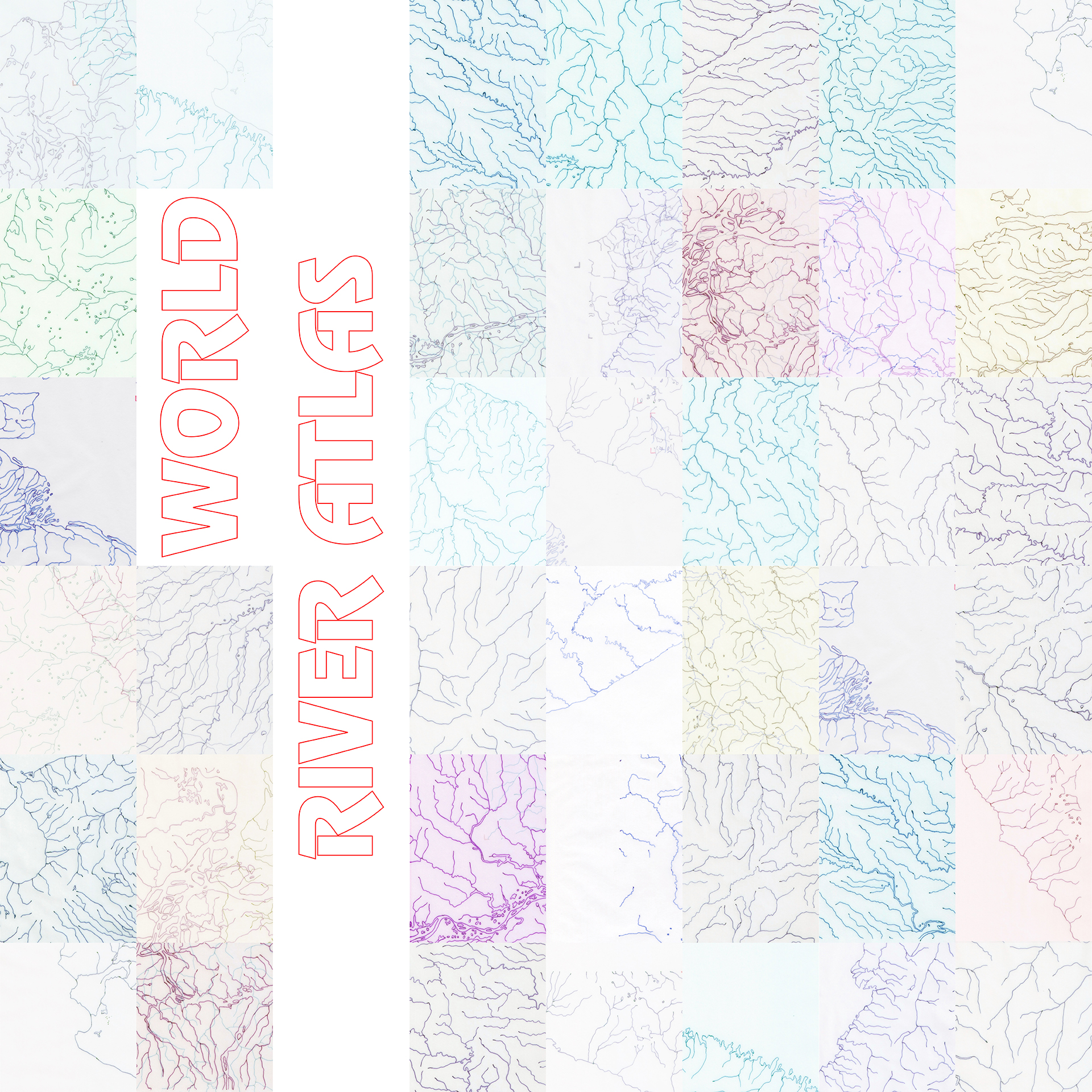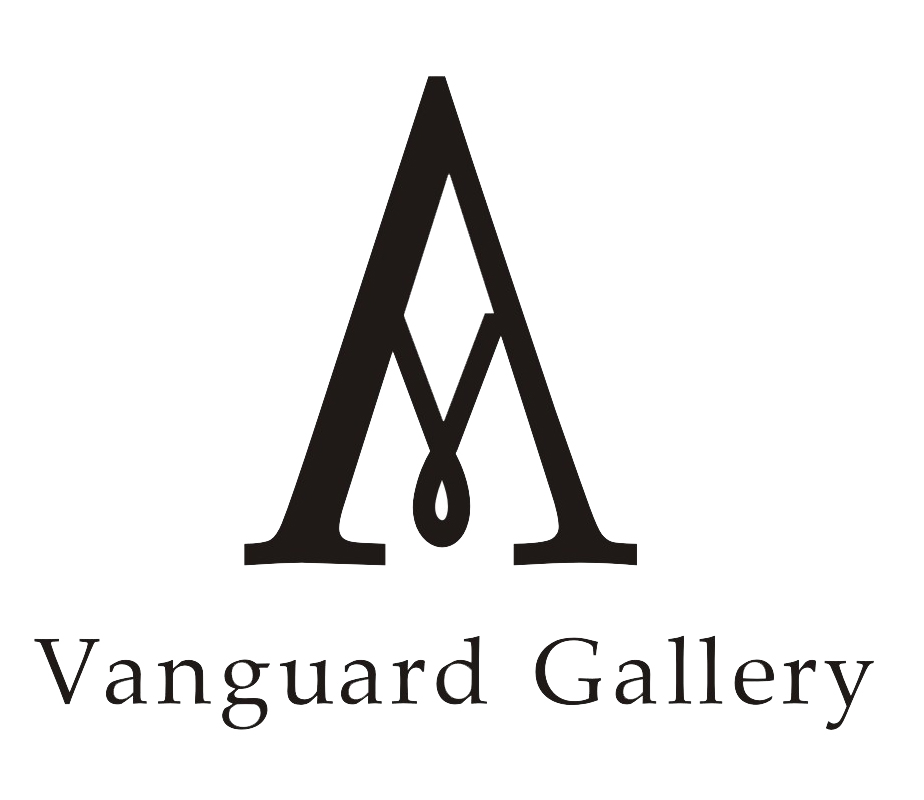
Use desktop or mobile browser for a better experience.
Yi Xin Tong
World River Atlas
2020
Ongoing drawing and internet project
Vanguard Gallery is presenting Yi Xin Tong’s newest project World River Atlas from December 10, 2020 to March 30, 2021. Volume I and II of this project will come online on December 10, 2020.
World River Atlas follows Tong’s creative process that often takes travel and encounters as a starting point. However, due to the thwarted travel conditions in 2020, the artist turns his yearning to migrate in the external world to imaginations in the internal space, in order to achieve liberation and transcendence conceptually. In this project, Tong begins his journey in a geo-information-based grid system, using a road-trip manual as a guide. The action of drawing echoes the spatiotemporal shifts, while the expectation and experience of the unknown are augmented by the almost meditative personal experience of drawing itself. Humans and their creations disappear on this journey, as do the political and cultural boundaries – the transient vicissitudes in human society and technology give way to the long and slow chronology of geology. On translucent paper, Tong uses his pens to trace the flow of rivers and the winding paths they carve out of mountains, like blood veins across the earth.
The artist describes the project:
"I walk thousands of kilometers of rivers on maps, not unlike how ancient Chinese people wòyóu – literally means “lying down travel” – the experiencing of nature by viewing landscape paintings instead of visiting in person. The rivers branch and merge, connecting oceans, lakes, mountains, and salt pans. The process of delineating the rivers inch by inch with lines is similar to a comprehensive caress and journey of the geological textures. Roads, cities, borders, and ruins leave no trace in this travel journal. What is filtered out is a translucent network, a world devoid of people, which grows and transforms itself."
The first two volumes of World River Atlas are presented in three viewing modes: Map, Grid, and Stack, respectively corresponding to a full continuous river atlas, a grid of individual drawings, and the visual outcome of multiple translucent drawings stacked together. These three modes increasingly disintegrate and break away from the geographic information to which the river atlas originally relate, emphasizing the images created from the drawing process and their intertextuality. World River Atlas takes the website as its primary site of engagement, applying the intuitive interactivity to visual cognition and the deconstruction of the meaning of images. This logic of the framework is partially inspired by the Net Art movement that flourished in the 1990s, which is based on the existence of the internet, using interactive interfaces and connectivity itself as methods.
The third volume World River Atlas: The Silk Road will embark at the Stay Art Festival in Nanchang in the afternoon of December 19, 2020 from 1:30 to 3:30. In Volume III, Tong will use an open-source model to invite fellow travellers to join on this intercontinental "wòyóu" and create a record of their own excursion and traces of what they have seen along the way.
Tong’s World River Atlas is the first project at Vanguard Gallery's newly established "Nonphysical" unit. Compared to exhibitions in the physical space, "Nonphysical" is an independent arena of its own, using online exhibitions and other "non-physical" platforms to present conceptual creations and formal constructions by artists. "Nonphysical" does not set specific subjects, but rather three projects are realized each year, constituting a conversation among themselves to promote exchange, create environments, explore directions, and exercise ideas.
Thanks to project website designer Matt Wolff for his work!

I walk thousands of kilometres of rivers on maps, not unlike how ancient Chinese people wòyóu – literally means “lying down travel” – the experiencing of nature by viewing landscape paintings instead of visiting in person.
The rivers branch and merge, connecting oceans, lakes, mountains, and salt pans. The process of delineating the rivers inch by inch with lines is similar to a comprehensive caress and journey of the geological textures.
Roads, cities, borders, and ruins leave no trace in this travel journal. What is filtered out is a translucent network, a world devoid of people, which grows and transforms itself.

Use desktop or mobile browser for a better experience.
Yi Xin Tong
World River Atlas (2020)
Ongoing drawing and internet project
Vanguard Gallery is presenting Yi Xin Tong’s newest project World River Atlas from December 10, 2020 to March 30, 2021. Volume I and II of this project will come online on December 10, 2020.
World River Atlas follows Tong’s creative process that often takes travel and encounters as a starting point. However, due to the thwarted travel conditions in 2020, the artist turns his yearning to migrate in the external world to imaginations in the internal space, in order to achieve liberation and transcendence conceptually. In this project, Tong begins his journey in a geo-information-based grid system, using a road-trip manual as a guide. The action of drawing echoes the spatiotemporal shifts, while the expectation and experience of the unknown are augmented by the almost meditative personal experience of drawing itself. Humans and their creations disappear on this journey, as do the political and cultural boundaries – the transient vicissitudes in human society and technology give way to the long and slow chronology of geology. On translucent paper, Tong uses his pens to trace the flow of rivers and the winding paths they carve out of mountains, like blood veins across the earth.
The artist describes the project:
"I walk thousands of kilometers of rivers on maps, not unlike how ancient Chinese people wòyóu – literally means “lying down travel” – the experiencing of nature by viewing landscape paintings instead of visiting in person. The rivers branch and merge, connecting oceans, lakes, mountains, and salt pans. The process of delineating the rivers inch by inch with lines is similar to a comprehensive caress and journey of the geological textures. Roads, cities, borders, and ruins leave no trace in this travel journal. What is filtered out is a translucent network, a world devoid of people, which grows and transforms itself."
The first two volumes of World River Atlas are presented in three viewing modes: Map, Grid, and Stack, respectively corresponding to a full continuous river atlas, a grid of individual drawings, and the visual outcome of multiple translucent drawings stacked together. These three modes increasingly disintegrate and break away from the geographic information to which the river atlas originally relate, emphasizing the images created from the drawing process and their intertextuality. World River Atlas takes the website as its primary site of engagement, applying the intuitive interactivity to visual cognition and the deconstruction of the meaning of images. This logic of the framework is partially inspired by the Net Art movement that flourished in the 1990s, which is based on the existence of the internet, using interactive interfaces and connectivity itself as methods.
The third volume World River Atlas: The Silk Road will embark at the Stay Art Festival in Nanchang in the afternoon of December 19, 2020 from 1:30 to 3:30. In Volume III, Tong will use an open-source model to invite fellow travellers to join on this intercontinental "wòyóu" and create a record of their own excursion and traces of what they have seen along the way.
Tong’s World River Atlas is the first project at Vanguard Gallery's newly established "Nonphysical" unit. Compared to exhibitions in the physical space, "Nonphysical" is an independent arena of its own, using online exhibitions and other "non-physical" platforms to present conceptual creations and formal constructions by artists. "Nonphysical" does not set specific subjects, but rather three projects are realized each year, constituting a conversation among themselves to promote exchange, create environments, explore directions, and exercise ideas.
Thanks to project website designer Matt Wolff for his work!


